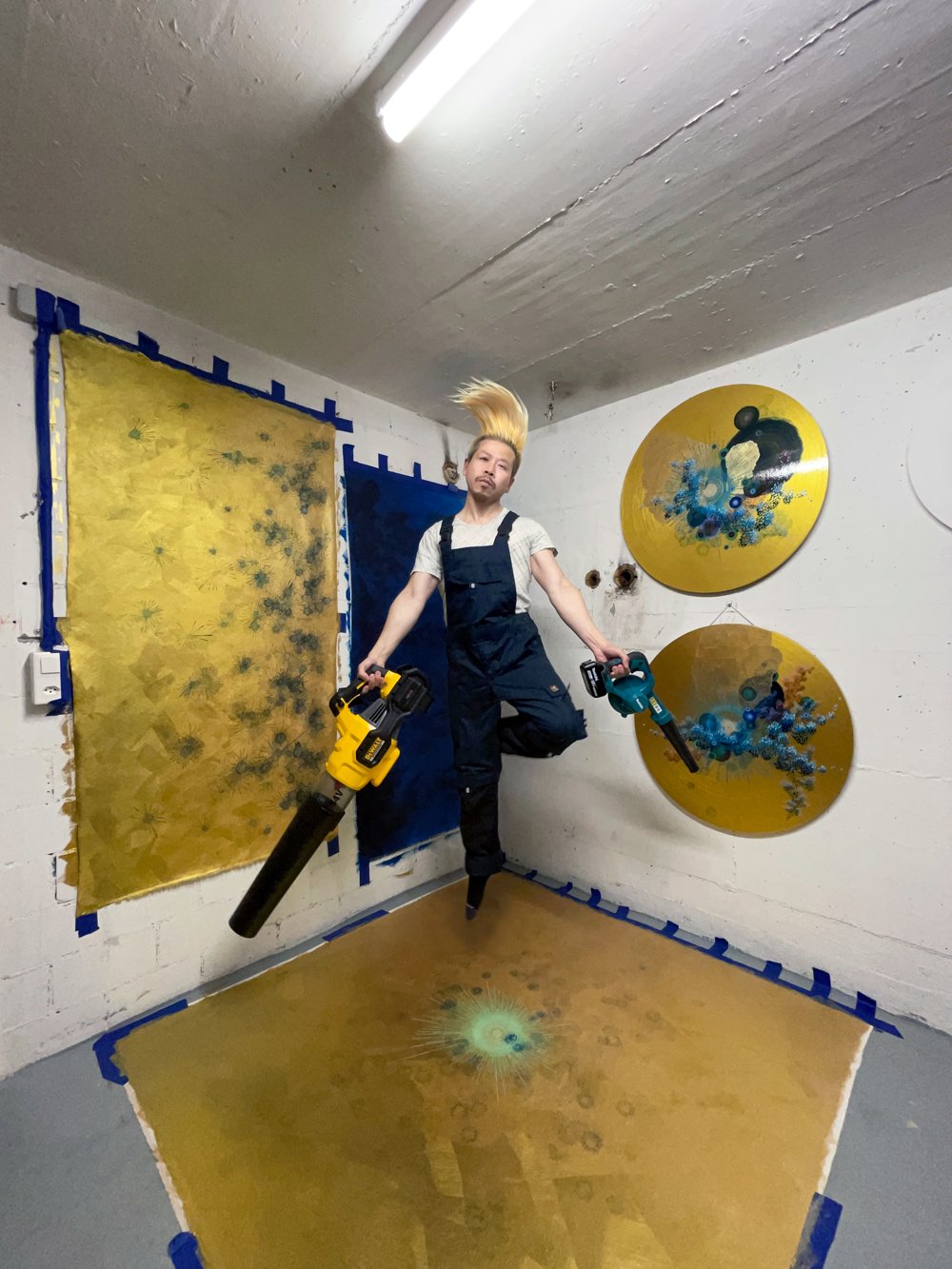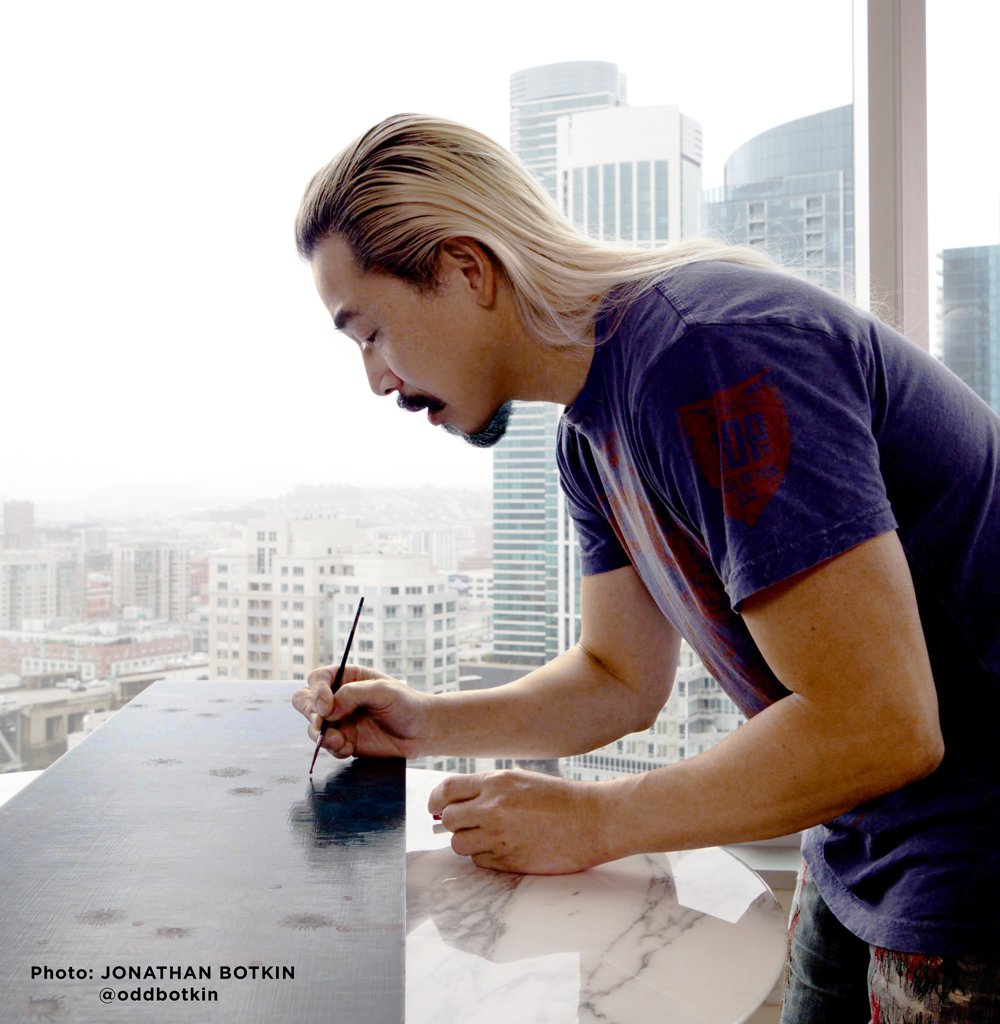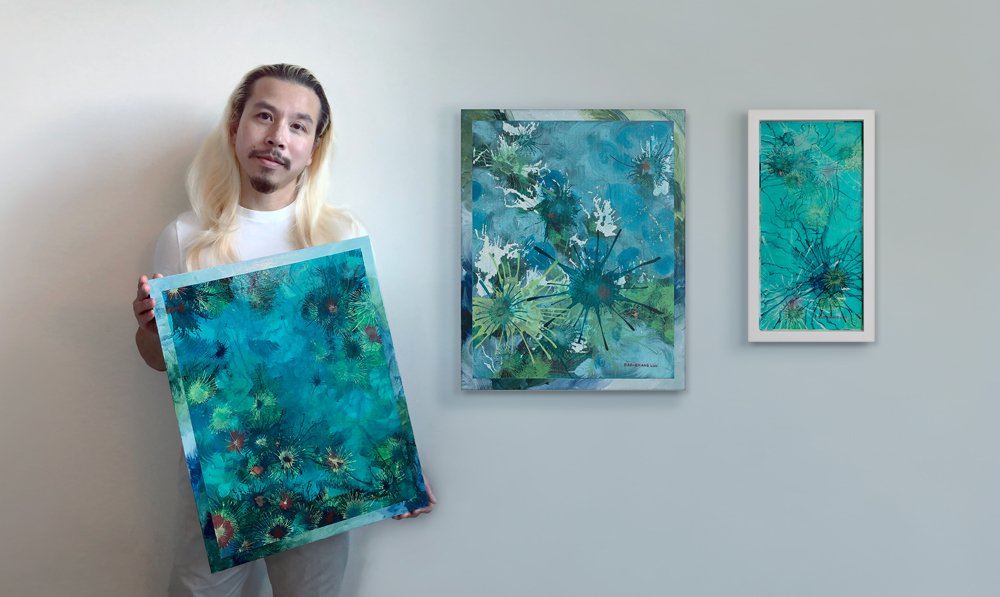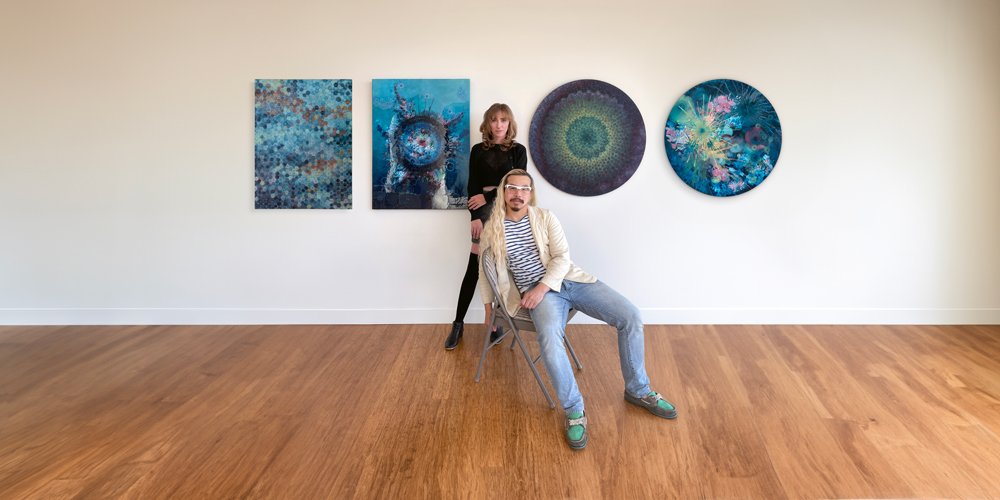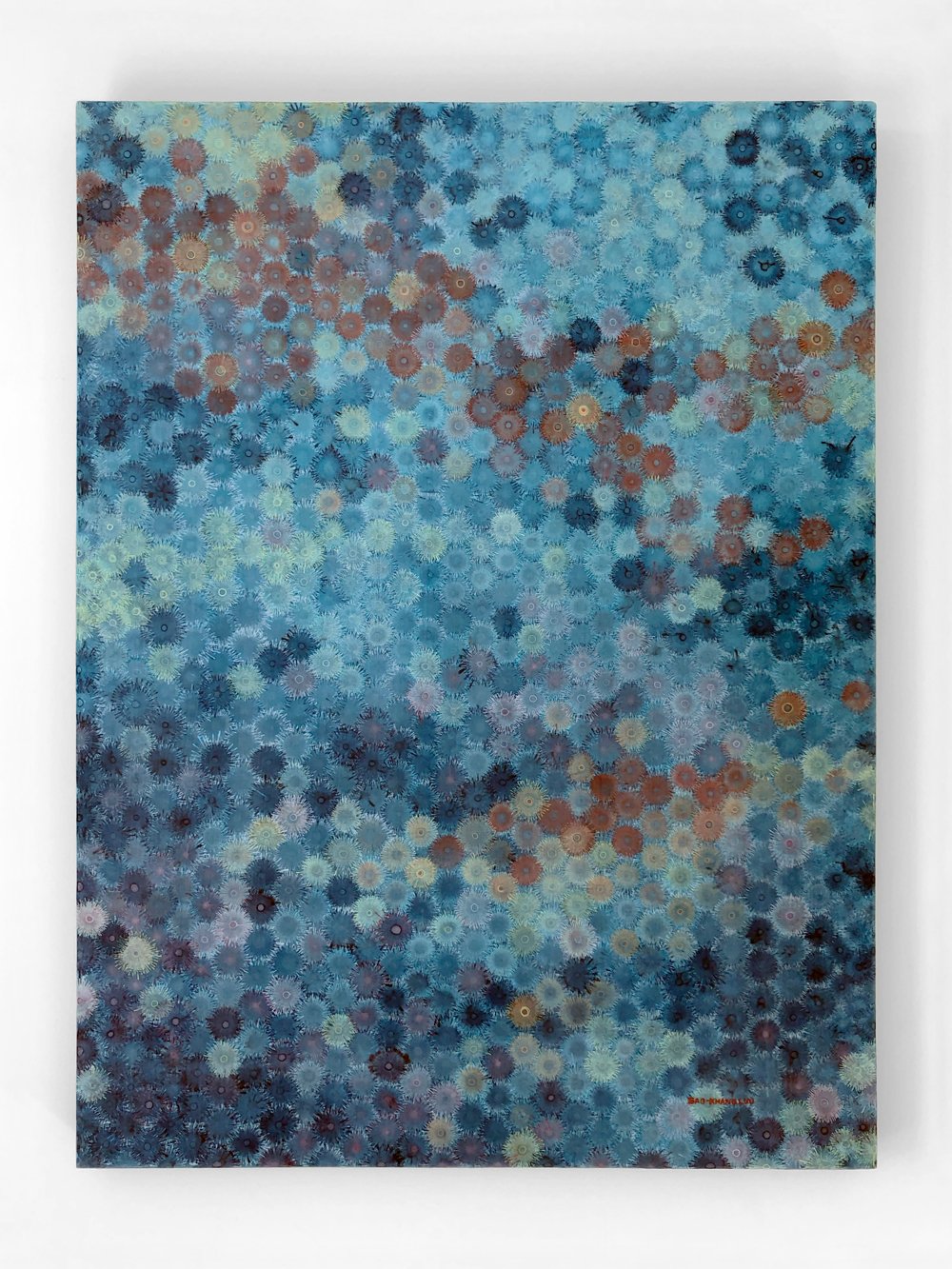Bao-Khang Luu
Can you tell us about your artistic journey and what inspired you to become an artist?
From a very young age, I knew I had a creative spirit and wanted to be an artist.
My parents hammered the idea that medicine, law, or engineering were the only acceptable professions and discouraged an artistic path. On the other hand, many teachers recognized my talent and provided special instruction and mentorship. By the end of high school, I had two dueling dreams—attending art school in NYC and pursuing pre-med studies. I attempted a dual major in design (Design was a compromise with my parents) and microbiology. It didn't go well.
I eventually made it to NYC, where I obtained a master's degree in design and technology. I stayed in the design industry through my early 30s before quitting to work on a design blog and lighting business. Design had become an indelible part of my identity.
After marrying my long-time boyfriend, we moved to London. I was entirely unproductive for years. In hindsight, this was a period of decompression and divestment. Just before the pandemic, we moved to Switzerland, where British gallerist and artist Sophie Scott encouraged me to make art and submit it to her gallery. Now, I pursue art professionally full-time. Many people helped me build my creative foundation, but Sophie catalyzed my transformation into the artist I had wanted to be since childhood.
What themes or concepts do you explore in your artwork, and why are they important to you?
Sustainability runs through all my work, manifesting in the inspiration, subject matter, medium, or process. I do this by connecting my series to specific locales, using reclaimed materials, and patronizing local vendors.
For example, I created my Les Reconfiguration sculptures while residing in the Swiss Alps. The pieces present pine cone scales meticulously mounted in wooden boxes, bringing attention to things we wouldn't usually give a second look.
I harvested pine cones from the village where I lived and gathered reclaimed wood from the local carpenter. The series is an homage to that village, a tribute to the local carpenter, and influenced by the local artists who encouraged and continue to support my art practice.
My Mistral series draws visual inspiration from nature. An abstract view of low tide in Ladys Cove, Marblehead, Massachusetts, is a metaphor for how differing moral standards define the limits of individual compassion. The series transforms an ugly origin and cynical message into paintings full of saturated color, depth, and hidden elements.
Could you describe your creative process, from ideation to execution? Are there any particular techniques or mediums you prefer?
Each series calls for a different creative process. With my background in design, I learned how to conduct research and implement an iterative process. I'm relearning a less restrained process driven by instinct and spontaneity. It's great to have both methods, which I often meld.
Events and materials spur ideas. I record ideas in sketchbooks. I may develop them further through drawing, writing, material studies, and prototyping on rare occasions. Sometimes, an idea goes from a sketchbook directly to a final piece.
I'm not fond of the process of creation. I dread studies and prototyping and find painting and construction tedious. My favorite part of the creative process is seeing a completed piece for the first time. Despite this, I'm always excited to work in my studio. The only way to arrive at a finished piece is by doing the work!
I prefer using found and reclaimed materials. I love reworking materials into something unexpected but, at the same time, highlighting their inherent beauty.
How do you find inspiration when faced with creative blocks or challenges in your work?
I rarely run into creative blocks. I have skills and strategies that allow me to be creative on command.
Technical challenges are a different matter. These issues require research and time. Sometimes, I can only resolve them with inspiration, which I often find in hardware stores. The cogs in my mind spin every time I visit as I daydream about using all the tools and making things with the materials.
Can you highlight a specific piece of your artwork that holds special significance to you and share the story behind it?
Mistral 1 is the first piece I created after working with my art coach, Martha Zlatar. I started working with her because I wanted to take my art practice seriously and grow as an artist. Until then, I created art filtered through a design lens. My upbringing, education, and career put blocks on my artistic vision. My identity was tied to my occupation as a designer. Letting go of that part of myself required soul-searching and mourning, which was an initial step.
I would prevent myself from doing things that felt frivolous and indulgent. With Martha's help, I started to rework my approach toward creativity. I revisited creative projects from my childhood, which led directly to my Mistral series. I refined the technique for blowing paint with a straw. It's physically taxing and precise. Still, one can find the underpinnings of freedom and play.
It's challenging to shed decades of conditioning completely, so I continue working with her to develop self-acceptance and permit myself to create the work I want.
How do you see your work evolving in the future? Are there any new techniques or mediums you're eager to explore?
The world will always have pain and conflict. I'll continue striving to convert darkness into beauty, but I will never create saccharine work. My work is ostensibly apolitical but has underpinnings of sustainability and the LGBTQIA+ experience. I see my work becoming more overtly political.
At any given point in time, I have many ideas percolating simultaneously. I love color, positivity, and simple joys.
Overall, I see color saturating my work and getting brighter. I've collected bins full of discards and detritus for years, which I'm excited to dig into.
What role does your personal experiences or background play in influencing your art? Are there cultural or social aspects that often find their way into your work?
My personal experiences and background provide the foundation for my art. My messaging originates from this foundation and drives the concept and the form.
Being part of the LGBTQIA+ community sets some of the societal obstacles I have to face. Additionally, as a child of Vietnamese refugees, I grapple with the ramifications of being part of a diaspora. One is a minority in one's own country and a foreigner in one's parental land of origin.
As a perpetual outsider, I possess a unique perspective and a practiced empathy. I may have my views, but to navigate life, I also have to know the views of the larger circles I am part of. I bring this attitude to bear in all of my work.
Are there any artists, past or present, who have had a significant influence on your artistic style or philosophy?
Each of my series has different artists who influence specific aspects of the work. For my latest series, Mistral, influences include Boucher, Fragonard, Charlie Harper, Ian Rayer-Smith, Brent Hayden, and Joseph Abbati.
Sculptures and curation by Brent Hayden and paintings by François Boucher and Jean-Honoré Fragonard guided my color palette. Charlie Harper's approach to depth and flattened space informs my approach to layering. Ian Rayer-Smith's paintings helped me focus on compositional tactics. The prominent metallics currently in my series come directly from Joseph Abbati.
How do you balance the commercial aspects of being an artist with staying true to your creative vision?
I easily balance the commercial aspects and fidelity to my creative vision. I owe this to years of design work, where I channeled creativity towards business objectives.
Commercial viability is one constraint in a long list, including physical limits of materials, spatial restraints of workspaces, deadlines for shows, skill deficiencies, and budgetary ceilings. I use constraints to help define the boundaries of my work and guide decisions throughout my creative process. Far from being a hindrance, these are essential tools and even inspiration in my art practice.
Can you share upcoming projects, exhibitions, or events where our audience can experience your work?
Gallerist Kalie Capadona in San Francisco carries nearly all the paintings from my Mistral series. Private viewings of my collection with the gallerist may be requested through my website (www.baokhangluu.com). Gallery Alpine in Switzerland displays several of the sculptures from my Une Reconfiguration series all year round.
I'm developing work for the latest evolution of the Mistral series. The new direction features more metallics, brighter hues, larger formats, Dura-lar, and a leap into sculptural forms. I'm excited to see this piece come to fruition.
I'll have a two-year-old to take care of and a newborn baby coming in a few months. However, if I can eke out extra bandwidth, I'd like to revamp my Une Reconfiguration series for a European show.


